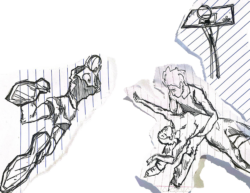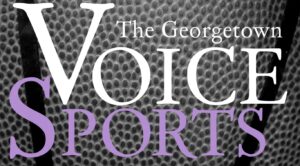Only a few basketball players have been bigger first-ballot shoe-ins for the Naismith Memorial Basketball Hall of Fame than Patrick Ewing, Sr.
The Hoya Destroya’s college accolades—three-time consensus All-American, two-time Big East Player of the Year, 1984 NCAA Tournament MVP—made him such a coveted NBA prospect that the league permanently installed a draft lottery to prevent teams from tanking in order to obtain the unstoppable big man. Once in the league, Ewing picked up right where he left off with another laundry-list of achievements—Rookie of the Year, 10 consecutive All-Star appearances, and Knickerbocker highs in points, rebounds, blocks and steals.
But while Ewing’s election to the basketball stratosphere was imminent, there was certainly an eyesore of an omission on his Hall of Fame résumé: a championship ring.
Unfortunately, a deficiency that may have eventually faded from the minds of all but the most bitter New Yorkers has become a lasting thorn in the side of all Ewing fans, thanks to the flawed theory of a brash Bostonian.
Bill Simmons, former “Boston Sports Guy” and current ESPN writer, gained popularity thanks in large part to his painfully true sports theories. One of the first and easily the most cited of these theories is the “Ewing Theory.” According to espn.com, the theory was not Simmons’ creation, but the brainchild of a bitter friend who was convinced that Ewing’s teams always did better when he was not playing. The Ewing Theory essentially states that when a team’s best player is unable to bring them to the promised land despite inordinate amounts of hype, that team will finally achieve success when that player is either traded or injured.
It is time to debunk the theory (or at least the name) that made the Sports Guy, and it shouldn’t be that difficult. The season that seems to give the theory a leg to stand on is ‘98-’99. The Knicks lost Ewing in Game 3 of the Eastern Conference Finals against the Pacers, but managed to win the series without him to advance to the Finals.
This would be far more significant if it were the first time that the Knicks had reached the finals since drafting Ewing, but New York made it to the finals in ‘93-’94, when Ewing and company lost a tight 7-game series to fellow HOF Class of 2008 big man Hakeem Olajuwon’s Houston Rockets. And while the Knicks were a game away from a championship with Ewing in ‘94, they were crushed by Tim Duncan, David Robinson and the Spurs in five games without him in ‘99. Since Ewing left the Knicks in the ‘99-’00 season, New York has made it to the playoffs only twice, losing in the first-round each time. They’re the current laughing stock of the NBA.
In his column laying out the genesis of the Ewing Theory, Simmons even includes Ewing’s time at Georgetown as evidence of the theory’s strength. The ridiculousness of this claim shouldn’t need to be outlined for any Georgetown student, but here it is: Ewing led the Hoyas to the Final Four in three of his four years on the Hilltop, a peak that Georgetown basketball hadn’t reached since World War II. In 1982 and 1985 the Hoyas lost the championship game, due in large part to a player by the name of Michael Jordan, as well as one of the greatest Cinderella teams of all time, Rollie Massimino’s Villanova Wildcats. But the greatest evidence against Simmons’ theory is hanging right here on campus—if Ewing can’t win the big game, what the heck is that 1984 banner doing in McDonough Gymnasium?



